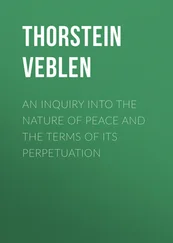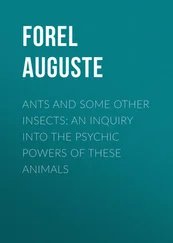Robert Pirsig - Lila. An Inquiry Into Morals
Здесь есть возможность читать онлайн «Robert Pirsig - Lila. An Inquiry Into Morals» весь текст электронной книги совершенно бесплатно (целиком полную версию без сокращений). В некоторых случаях можно слушать аудио, скачать через торрент в формате fb2 и присутствует краткое содержание. Жанр: Современная проза, на английском языке. Описание произведения, (предисловие) а так же отзывы посетителей доступны на портале библиотеки ЛибКат.
- Название:Lila. An Inquiry Into Morals
- Автор:
- Жанр:
- Год:неизвестен
- ISBN:нет данных
- Рейтинг книги:3 / 5. Голосов: 1
-
Избранное:Добавить в избранное
- Отзывы:
-
Ваша оценка:
- 60
- 1
- 2
- 3
- 4
- 5
Lila. An Inquiry Into Morals: краткое содержание, описание и аннотация
Предлагаем к чтению аннотацию, описание, краткое содержание или предисловие (зависит от того, что написал сам автор книги «Lila. An Inquiry Into Morals»). Если вы не нашли необходимую информацию о книге — напишите в комментариях, мы постараемся отыскать её.
Lila. An Inquiry Into Morals — читать онлайн бесплатно полную книгу (весь текст) целиком
Ниже представлен текст книги, разбитый по страницам. Система сохранения места последней прочитанной страницы, позволяет с удобством читать онлайн бесплатно книгу «Lila. An Inquiry Into Morals», без необходимости каждый раз заново искать на чём Вы остановились. Поставьте закладку, и сможете в любой момент перейти на страницу, на которой закончили чтение.
Интервал:
Закладка:
He wondered if he would come across a doll like Lila’s, but he didn’t see any.
Farther on was a Styrofoam coffee cup, a tire, another coffee cup, some more big burned timbers with rusted steel spikes that he had to step over. It all looked worn and bleached and seemed to have drifted in from the bay, not brought by any tourists who were here. It looked too trashy here for tourists. Strange how you could be so close to Manhattan yet in such a remote rural place. It wasn’t rural exactly. It wasn’t anything exactly except abandoned. It was a ruins of something. The vegetation was ruins vegetation.
Back of the debris were some evergreens that looked like yews or junipers. Other bushes had only a few red leaves left. Still farther back were marsh grasses of various species, mostly gold but still a little green. They looked as pure and delicate as prehistoric plants.
Off on the far side of marsh by an abandoned day beacon stood a white egret.
Phædrus found the road where the chart said it would be, nice asphalt, clean, deserted. He enjoyed the stretch of his legs.
The sumac here was just turning red.
Another road. How many had he hiked like this?
October was a good month for hiking.
He walked down the tree and shrub-lined road feeling sort of marvelous about the fact that somehow he was right here. Dynamic.
Lila was talking. That was an accomplishment. It showed he was on the right track.
She wasn’t making much sense yet with all that talk about the island and Rigel, but that would come in time. The thing was not to force it, not to set up a confrontation. It was an intriguing idea to send someone like Lila to Samoa for a cure but it wouldn’t work. What’s wrong with insanity is that she’s outside any culture. She’s a culture of one. She has her own reality which no other culture is able to see. That’s what had to be reconciled. It could be that if he just didn’t give her any problems for the next few days her culture of one might just clear the whole thing up by itself.
He wasn’t going to send her to any hospital. He knew that now. At a hospital they’d just start shooting her full of drugs and tell her to adjust. What they wouldn’t see is that she is adjusting. That’s what the insanity is. She’s adjusting to something. The insanity is the adjustment. Insanity isn’t necessarily a step in the wrong direction, it can be an intermediate step in a right direction. It wasn’t necessarily a disease. It could be part of a cure.
He was no expert on the subject but it seemed to him that the problem of curing an insane person is like the problem of curing a Moslem or curing a communist or curing a Republican or Democrat. You’re not going to make much progress by telling them how wrong they are. If you can convince a mullah that everything will be of higher value if he changes his beliefs to those of Christianity, then a change is not only possible but likely. But if you can’t, forget it. And if you can convince Lila that it’s more valuable to consider her baby to be a doll than it is to consider her doll to be a baby, then her condition of insanity will be alleviated. But not before.
That doll thing was a solution to something, some child thing, but he didn’t know what it was. The important thing was to support her delusions and then slowly wean her away from them rather than fight them.
The catch here, which almost any philosopher would spot, is the word, delusion. It’s always the other person who’s deluded. Or ourselves in the past. Ourselves in the present are never deluded. Delusions can be held by whole groups of people, as long as we’re not a part of that group. If we’re a member then the delusion becomes a minority opinion.
An insane delusion can’t be held by a group at all. A person isn’t considered insane if there are a number of people who believe the same way. Insanity isn’t supposed to be a communicable disease. If one other person starts to believe him, or maybe two or three, then it’s a religion.
Thus, when sane grown men in Italy and Spain carry statues of Christ through the streets, that’s not an insane delusion. That’s a meaningful religious activity because there are so many of them. But if Lila carries a rubber statue of a child with her wherever she goes, that’s an insane delusion because there’s only one of her.
If you ask a Catholic priest if the wafer he holds at Mass is really the flesh of Jesus Christ, he will say yes . If you ask, Do you mean symbolically? he will answer, No, I mean actually. Similarly if you ask Lila whether the doll she holds is a dead baby she will say yes. If you ask, Do you mean symbolically? she would also answer, No, I mean actually. It is considered correct to say that until you understand that the wafer is really the body of Christ you will not understand the Mass. With equal force it is possible to say that until you understand that this doll is really a baby you will never understand Lila. She’s a culture of one. She’s a religion of one. The main difference is that the Christian, since the time of Constantine, has been supported by huge social patterns of authority. Lila isn’t. Lila’s religion of one doesn’t have a chance.
That isn’t a completely fair comparison, though. If the major religions of the world consisted of nothing but statues and wafers and other such paraphernalia they would have disappeared long ago in the face of scientific knowledge and cultural change, Phædrus thought. What keeps them going is something else.
It sounds quite blasphemous to put religion and insanity on an equal footing for comparison, but his point was not to undercut religion, only to illuminate insanity. He thought the intellectual separation of the topic of sanity from the topic of religion has weakened our understanding of both.
The current subject-object point of view of religion, conventionally muted so as not to stir up the fanatics, is that religious mysticism and insanity are the same. Religious mysticism is intellectual garbage. It’s a vestige of the old superstitious Dark Ages when nobody knew anything and the whole world was sinking deeper and deeper into filth and disease and poverty and ignorance. It is one of those delusions that isn’t called insane only because there are so many people involved.
Until quite recently Oriental religions and Oriental cultures have been similarly grouped as backward, suffering from disease and poverty and ignorance because they were sunk into a demented mysticism. If it were not for the phenomenon of Japan suddenly leaving the subject-object cultures looking a little backward, the cultural immune system surrounding this view would be impregnable.
The Metaphysics of Quality identifies religious mysticism with Dynamic Quality. It says the subject-object people are almost right when they identify religious mysticism with insanity. The two are almost the same. Both lunatics and mystics have freed themselves from the conventional static intellectual patterns of their culture. The only difference is that the lunatic has shifted over to a private static pattern of his own, whereas the mystic has abandoned all static patterns in favor of pure Dynamic Quality.
The Metaphysics of Quality says that as long as the psychiatric approach is encased within a subject-object metaphysical understanding it will always seek a patterned solution to insanity, never a mystic one. For exactly the same reasons that Choctaw Indians don’t distinguish blue from green and Hindi-speaking people don’t distinguish ice from snow, modern psychology cannot distinguish between a patterned reality and an unpatterned reality and thus cannot distinguish lunatics from mystics. They seem to be the same.
Читать дальшеИнтервал:
Закладка:
Похожие книги на «Lila. An Inquiry Into Morals»
Представляем Вашему вниманию похожие книги на «Lila. An Inquiry Into Morals» списком для выбора. Мы отобрали схожую по названию и смыслу литературу в надежде предоставить читателям больше вариантов отыскать новые, интересные, ещё непрочитанные произведения.
Обсуждение, отзывы о книге «Lila. An Inquiry Into Morals» и просто собственные мнения читателей. Оставьте ваши комментарии, напишите, что Вы думаете о произведении, его смысле или главных героях. Укажите что конкретно понравилось, а что нет, и почему Вы так считаете.











